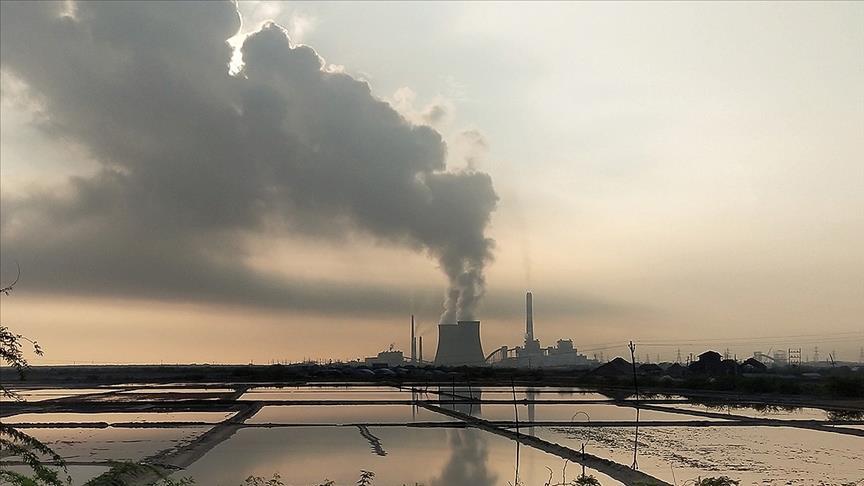The International Energy Agency (IEA) says that oil and gas companies are not doing enough to cut methane emissions, despite methane cuts being among the cheapest options to limit near-term global warming
According to IEA’a latest annual Global Methane Tracker report, emissions from the energy sector rose slightly last year to 135 million tons, slightly below the record set in 2019.
IEA Executive Director Fatih Birol said that while some progress is being made, there is no excuse for emissions still far too high and not falling fast enough.
Around 30 percent of the increase in global temperatures during the Industrial Revolution can be attributed to methane. Methane emissions may prove to be the most effective approach to slow down short-term global warming and quickly improve air quality because they have a quicker and more significant impact than carbon dioxide decreases.
Only agriculture produces more methane emissions than the energy sector, which is responsible for almost 40 percent of all emissions linked to human activity.
According to the IEA, current technology could cut methane emissions from fossil fuel activities by about 70 percent.
The IEA added that based on the record gas prices in 2022, about 80 percent of the emission reduction options from oil and gas operations worldwide could be implemented at no net cost.
According to the IEA, $100 billion, or less than 3 percent of the revenue earned by oil and gas corporations globally last year, would be sufficient to reduce methane emissions by 75%.
The IEA asserted that halting all non-emergency methane flaring and venting is the most effective step nations can take to reduce emissions.
The IEA believes that to achieve net zero methane emissions by 2050 and keep the average increase in global temperature well below the two degrees Celsius set by the 2015 Paris Climate Accords, methane emissions from the fossil fuel sector must be reduced by 75 percent by 2030.



 AstraZeneca’s LATIFY Phase III Trial of Ceralasertib Misses Primary Endpoint in Lung Cancer Study
AstraZeneca’s LATIFY Phase III Trial of Ceralasertib Misses Primary Endpoint in Lung Cancer Study  Eli Lilly and Novo Nordisk Battle for India’s Fast-Growing Obesity Drug Market
Eli Lilly and Novo Nordisk Battle for India’s Fast-Growing Obesity Drug Market  Why U.S. Coffee Prices Are Staying High Despite Trump’s Tariff Rollbacks
Why U.S. Coffee Prices Are Staying High Despite Trump’s Tariff Rollbacks  How ongoing deforestation is rooted in colonialism and its management practices
How ongoing deforestation is rooted in colonialism and its management practices  South Korea Central Bank Warns of Rising Financial Stability Risks Amid Won Volatility
South Korea Central Bank Warns of Rising Financial Stability Risks Amid Won Volatility  Fertile land for growing vegetables is at risk — but a scientific discovery could turn the tide
Fertile land for growing vegetables is at risk — but a scientific discovery could turn the tide  RBA Signals Possible Interest Rate Hike in 2026 as Inflation Pressures Persist
RBA Signals Possible Interest Rate Hike in 2026 as Inflation Pressures Persist  LA fires: Long-term exposure to wildfire smoke is poorly understood − and a growing risk
LA fires: Long-term exposure to wildfire smoke is poorly understood − and a growing risk  Extreme heat, flooding, wildfires – Colorado’s formerly incarcerated people on the hazards they faced behind bars
Extreme heat, flooding, wildfires – Colorado’s formerly incarcerated people on the hazards they faced behind bars  GLP-1 Weight Loss Pills Set to Reshape Food and Fast-Food Industry in 2025
GLP-1 Weight Loss Pills Set to Reshape Food and Fast-Food Industry in 2025  Boeing Wins $2.04B U.S. Air Force Contract for B-52 Engine Replacement Program
Boeing Wins $2.04B U.S. Air Force Contract for B-52 Engine Replacement Program  Yen Stabilizes Near Lows as Japan Signals Readiness to Intervene Amid Dollar Weakness
Yen Stabilizes Near Lows as Japan Signals Readiness to Intervene Amid Dollar Weakness  Burkina Faso and Mali’s fabulous flora: new plant life record released
Burkina Faso and Mali’s fabulous flora: new plant life record released  Nike Stock Jumps After Apple CEO Tim Cook Buys $2.9M Worth of Shares
Nike Stock Jumps After Apple CEO Tim Cook Buys $2.9M Worth of Shares  China Keeps Benchmark Lending Rates Steady as Economic Outlook Remains Cautious
China Keeps Benchmark Lending Rates Steady as Economic Outlook Remains Cautious  Gold Prices Surge to Record Highs as Geopolitical Tensions Fuel Safe-Haven Demand
Gold Prices Surge to Record Highs as Geopolitical Tensions Fuel Safe-Haven Demand 






























